When it comes to music, few instruments carry the same timeless charm and versatility as the upright piano. Whether you’re a budding musician or simply looking to appreciate the beauty of this instrument, understanding upright pianos is a great place to start. In this guide, Piano Rentals will break down the basics of upright pianos, discuss their unique features, and explore the benefits of renting one for your musical journey.
What is an Upright Piano?
An upright piano is a musical instrument known for its distinctive vertical shape. Unlike grand pianos, which have horizontal strings and are placed on the ground, upright pianos stand upright, with their strings running vertically from top to bottom. This design makes them more compact and suitable for smaller spaces, making them a popular choice for homes, schools, and music studios.
The Anatomy
Understanding the different parts of an upright piano is crucial to appreciate how it produces beautiful music. Here are the key components:
- Keyboard: The keyboard is where you play the piano. It consists of 88 keys, with a combination of white and black keys. The white keys represent the natural notes (A, B, C, D, E, F, G), while the black keys represent the sharps and flats (A#, C#, D#, F#, G#).
- Soundboard: The soundboard is a large, wooden panel inside the piano that amplifies the vibrations produced by the strings when you strike a key. This amplification is what creates the piano’s rich and resonant sound.
- Hammers: When you press a key, it activates a hammer mechanism that strikes the corresponding string. The hammers are covered with felt to produce a softer, more melodic tone.
- Strings: Upright pianos have vertical strings that run from the top to the bottom of the piano. The length and thickness of these strings determine the pitch and timbre of each note.
- Pedals: Upright pianos typically have two or three pedals. The most common pedals are the sustain pedal (on the right), which sustains the notes, and the soft pedal (on the left), which dampens the sound for a softer, muted tone.
Renting an Upright Piano
If you’re new to playing the piano or unsure about making a long-term commitment to buying one, renting an upright piano is an excellent option. Besides choosing a trusted company for your upright piano, here are other benefits to consider:
- Cost-Effective: Renting a piano is more budget-friendly than purchasing one outright. It allows you to access a high-quality instrument without a significant upfront investment.
- Trial Period: Renting provides you with a chance to test your commitment to playing the piano. If you decide it’s not for you, you can return the piano without any long-term obligations.
- Flexibility: Renting gives you the flexibility to upgrade to a different piano or model as your skills improve or your preferences change.
- Maintenance Included: Rental agreements often include maintenance and tuning services, ensuring that your piano stays in top-notch condition.
- Space-Efficient: Upright pianos are compact and fit well in smaller living spaces. Renting allows you to enjoy the benefits of a piano without sacrificing precious room space.
Choosing the Right Upright Piano
When renting an upright piano, it’s important to select the right one for your needs. Here are some factors to consider:
- Size: Upright pianos come in various sizes, from small spinet pianos to larger studio or upright grand pianos. Consider the available space in your home when choosing the size of your rented piano.
- Tone and Sound: Different pianos have unique tonal characteristics. Try out different models to find the one that matches your musical preferences and playing style.
- Budget: Determine your budget for renting a piano and inquire about rental fees, including any additional costs for maintenance or transportation.
- Rental Terms: Review the terms of the rental agreement, including the length of the rental period, maintenance services provided, and the process for returning the piano.
Maintaining Your Piano
Proper maintenance is crucial to keeping your rented upright piano in excellent condition. Here are some essential tips:
- Regular Tuning: Pianos need regular tuning to stay in tune with other instruments. Schedule tuning sessions with a professional piano tuner at least once a year.
- Humidity Control: Maintain a stable humidity level in the room where the piano is placed. Extreme fluctuations in humidity can damage the piano’s wooden components.
- Cleaning: Dust the piano regularly with a soft cloth to prevent dust buildup, which can affect the sound and appearance of the instrument.
- Avoid Direct Sunlight: Keep the piano away from direct sunlight, as it can cause the finish to fade and damage the strings.
- Use a Cover: When the piano is not in use, consider using a cover to protect it from dust and accidental spills.
Understanding upright pianos is the first step toward embracing the beauty and magic of this timeless instrument. Whether you’re a beginner or an experienced pianist, renting an upright piano can be a smart choice, offering affordability, flexibility, and access to a quality instrument. Check out the inventory at pianorentals.com and read through our easy rental process.
As you embark on your musical journey, remember to care for your piano through regular maintenance and enjoy the melodic world it opens for you. So, why wait? Purchase or Rent an upright piano today and start creating your musical masterpiece.
Contact Piano Rentals, the leader in helping aspiring pianists in Southern California since 1991.








